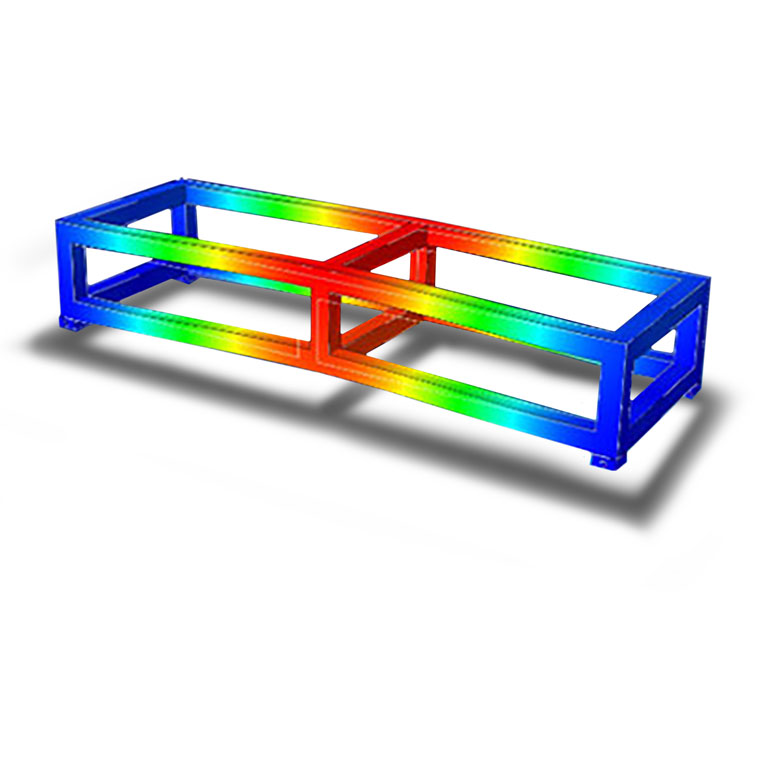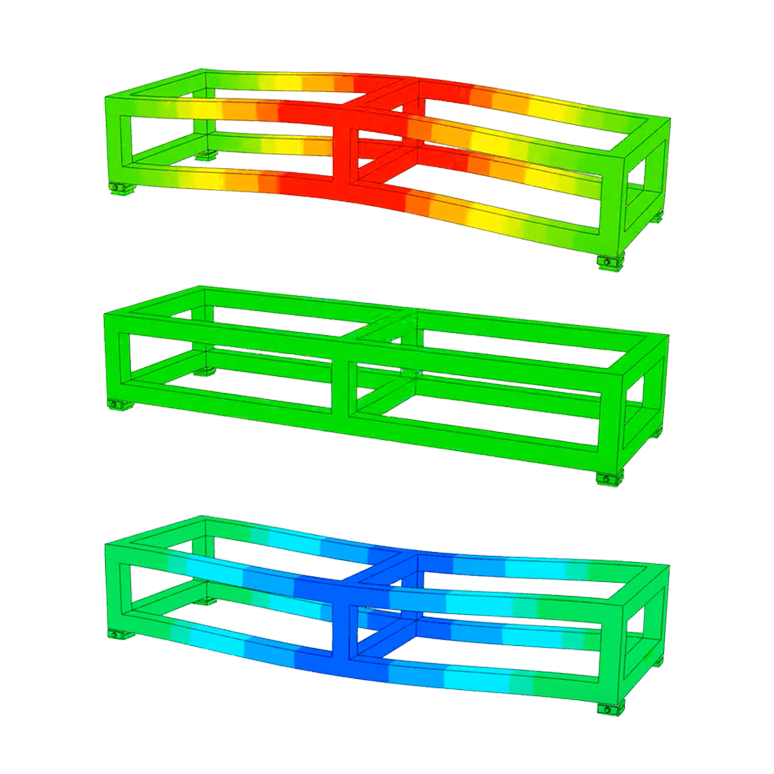Search
Modal analyses
The basis for vibration optimization
If we want to consider the structure of a component or an object, such as a machine steel frame, a concrete hall ceiling or a milling machine, in terms of vibration, we need to know values such as their natural shapes and their natural frequencies. This is the only way to develop targeted measures to reduce vibration.
Modal analysis is the optimal tool for determining natural frequencies, mode shapes and modal damping. These modal values are the basis for vibration-optimized designs or subsequent vibration-reducing measures.
What is a modal analysis?
The mode shape is the deformation specific to the component and its distributed mass in the direction of its lowest stiffness. The finite element method (FEM) can be used to identify structural weak points as well as resonance points to be avoided. The FEM modal analysis and the FEM operational vibration mode analysis provide the natural frequencies and natural modes of a structure in the frequency range: While the modal analysis generates qualitative deformations due to unit forces, the operational vibration mode analysis provides quantitative deformations due to dynamic excitation forces in the frequency range.
With the help of such a modal test and the corresponding measurements, measures for vibration reduction can be derived, real test results can be verified and a better understanding of the mechanical behavior of the structure can be obtained by varying the parameters.
How does a modal analysis work?
Using the simple real-life example of measuring a machine frame, we show the functionality and results of a modal analysis:
On the left, you can see the eigenmodes of a machine frame in an elastic and damped setup - on the right, in comparison in a rigid setup.

Your contact person
Modal analyses

